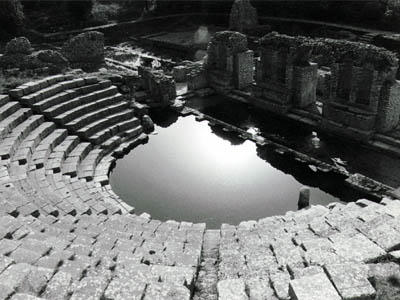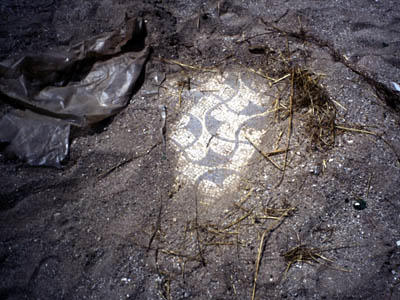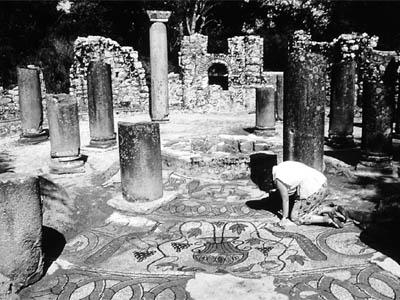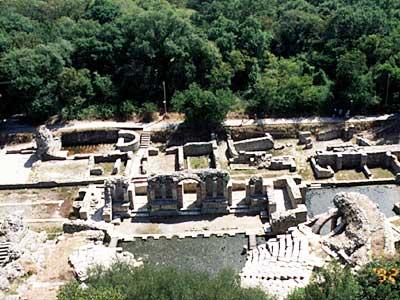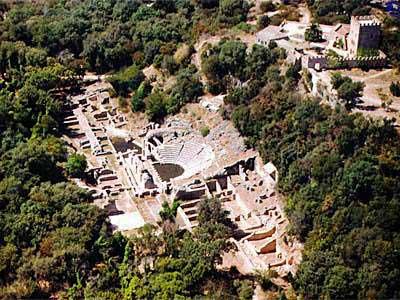Archaeological evidence indicates that Corfiot traders founded Butrint in the eighth century B.C. Situated along the Adriatic coast, the town functioned as a way station between Epirus and the Italian territories to the south. The Greek historian Thucydides, writing in the fifth century B.C., refers to a struggle for control of the narrow straits that separate Butrint from the island of Corfu. In Book III of Virgil's Aeneid, the displaced hero arrives at the site and remarks: “I saw before me Troy in miniature / A slender copy of our massive tower.” Butrint was colonized by the Romans under Julius Caesar in 44 B.C., and later occupied by the Byzantine, Venetian, and Ottoman Empires. These layers of civilization were rediscovered by Italian archaeologist Luigi Ugolini in the 1920's, who unearthed an amphitheater dating from the fourth century B.C. Subsequent excavations have yielded Roman villas with intact mosaic floors, shrines, a baptistery, and a Byzantine palace. Communist dictator Enver Hoxha (1945-1985) closed Albania to foreign excavation and research, which resumed after the fall of his government in 1991.
1996, 1998 and 2000 World Monuments Watch
Encroaching vegetation, groundwater absorption, and floods caused by a poor drainage system were weakening the stone monuments. A foundation was formed to protect the location in 1993, but efforts had lagged due to civil unrest in the region. Richard Hodges, Scientific Director of the Butrint Foundation in 1996, noted: “The project sponsored by the World Monuments Fund has breathed new life into the [Albanian] Institute of Monuments, an institution which had lost all momentum after the collapse of the Communist regime.” WMF's support revitalized progress at Butrint, which included removing the overgrowth, training local workers in site maintenance, constructing visitor facilities, and addressing the drainage problem.
The natural and cultural values of Butrint are numerous. Its location along the Adriatic adds to the drama of the site. Butrint was an important stop along a major trade route in the eighth century and was controlled by various empires, including the Romans, Byzantines, Venetians, and Ottomans. Butrint’s archaeological remains reflect the diversity of the different cultures who built, lived and worked in the settlement.

